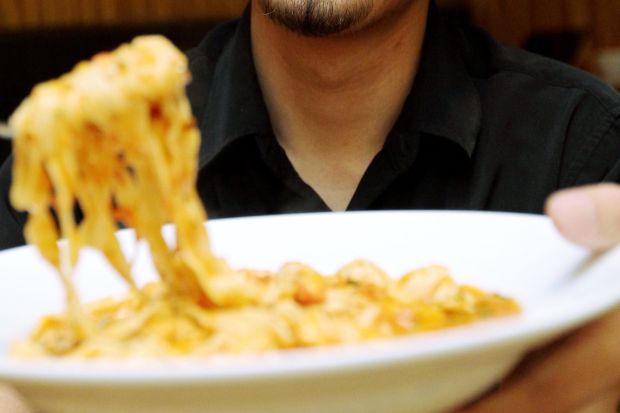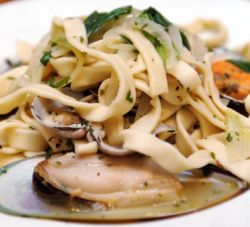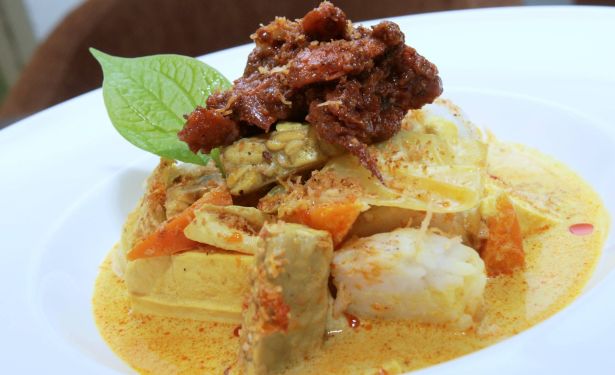How do you cook pasta the way the Italians do it? Chefs at Capricciosa Pasta & Pizza provide some tips.
THERE’S only one way pasta should be cooked: al dente.
“Al dente means pasta that is not overcooked or undercooked. They are a little soft on the outside and crunchy on the inside,” said Capricciosa Pasta & Pizza director of marketing Ryan Poh.
This is the “true Italian way”, and the only way to cook pasta al dente is to cook it to order, says Poh.
The restaurant serves fresh, handmade pasta (fettuccine and pappardelle) as well as dried pasta from the packet.
“We don’t cook our pasta until our guest makes the order,” says Poh.
In fact, Capricciosa claims to be the only outlet that serves al dente pasta all the time. Chefs come in at 7am to cook the sauces (which they slow-cook for 2½ hours), make the pasta dough and do other food preparations.
Poh says many restaurants sell their pastas precooked.
“Meaning, they actually boil the pasta and then leave it to cool down. Then, they will pack it, leave it in the chiller and when the customer orders, take it out to reheat and serve. Most of the time these pastas are overcooked – they’re too soft,” he says.
Star2 visited Capricciosa in Sunway Pyramid, Petaling Jaya, Selangor to have a look at how they make their pasta.
(The Japanese chain of Italian restaurants, which was founded by Masaki Honda in Japan in 1978, is one of hundreds of outlets around the world. The Sunway Pyramid branch is Malaysia’s first.)
Cooking pasta can be quite a scientific process, says Poh.
For one, the thickness of the pasta determines how long to cook it.
(Most pasta off the supermarket shelves have numbers on the package. That indicates the diameter of the dried strands in millimetres, says Poh.)
Even the type of cooking pot used will affect the time needed to cook the pasta as each pot produces a different temperature, says Poh.
“If you get 10 orders and you place 10 orders of pasta in the boiler at once, the temperature of the water will decrease so cooking time will actually be a little longer.
“At Capricciosa, the time to cook the pasta has already been calculated based on our equipment and the type of pasta we use. The perfect time for us is 7½ minutes – nothing more, nothing less,” he says.
The chefs use a timer for this but once the timer rings, they will still test a strand of pasta by hand to be sure it is al dente.
“If it’s not, they probably have to cook it a little longer,” says Poh.
Once you’ve made the pasta, it’s time to slather on the sauce. However, one needs to use the right kind of sauce based on the pasta noodle.
As a rule of thumb, thicker pastas go better with rich, heavy sauces while thin pastas go well with lighter sauces, says Poh.
“The thinnest spaghetti, which is something like our local bee hoon, is called “angel hair”. It is 1mm to 2mm in diameter and goes better with lighter sauces. So, it should be done aglio olio style with olive oil,” he says.
Other light sauces are white wine and broth.
For thicker pasta such as fettuccine and pappardelle, tomato-based sauces, carbonara and bolognaise sauces are good.
“Tomato-based sauces go well with normal 5mm to 8mm spaghetti,” says Poh.






